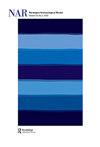‘Trying to Hear with the Eyes’: Slow Looking and Ontological Difference in Archaeological Object Analysis
IF 0.8
3区 历史学
0 ARCHAEOLOGY
引用次数: 1
Abstract
This article presents an alternative to archaeological object observation through an exercise in alterity and slow looking. It is inspired by the movement of Slow Archaeology, and based on the art of slow looking, perspectivism, and 16th century Japanese object aesthetics in the context of the Japanese tea ceremony. The exercise experiments with different vantage points, embodiment, and empathy related to theories of the ontological turn and non-discursive knowledge. Stimulating ourselves to employ different ways of looking can be a helpful tool in starting to think about difference and alterity, but can also possibly reach new insights on ancient object-use, performance, and perception. It can therefore form an additional instrument to formal object analyses already practiced in archaeology, as well as be a form of emancipation in education as it draws on other, non-discursive, forms of knowledge.“试图用眼睛听”:考古对象分析中的慢视与本体论差异
这篇文章提出了一种替代考古对象观察通过练习交替和慢看。它的灵感来自于慢考古运动,并基于慢看艺术,透视主义,以及16世纪日本茶道背景下的日本物体美学。不同优势点、具身和共情的练习实验与本体论转向理论和非话语知识理论有关。激励我们自己采用不同的观察方式可以成为开始思考差异和差异性的有用工具,但也可能对古代物体的使用、性能和感知产生新的见解。因此,它可以形成考古学中已经实践的形式对象分析的额外工具,也可以成为教育中的一种解放形式,因为它借鉴了其他非话语的知识形式。
本文章由计算机程序翻译,如有差异,请以英文原文为准。
求助全文
约1分钟内获得全文
求助全文
来源期刊

Norwegian Archaeological Review
ARCHAEOLOGY-
CiteScore
2.10
自引率
0.00%
发文量
13
期刊介绍:
Norwegian Archaeological Review published since 1968, aims to be an interface between archaeological research in the Nordic countries and global archaeological trends, a meeting ground for current discussion of theoretical and methodical problems on an international scientific level. The main focus is on the European area, but discussions based upon results from other parts of the world are also welcomed. The comments of specialists, along with the author"s reply, are given as an addendum to selected articles. The Journal is also receptive to uninvited opinions and comments on a wider scope of archaeological themes, e.g. articles in Norwegian Archaeological Review or other journals, monographies, conferences.
 求助内容:
求助内容: 应助结果提醒方式:
应助结果提醒方式:


